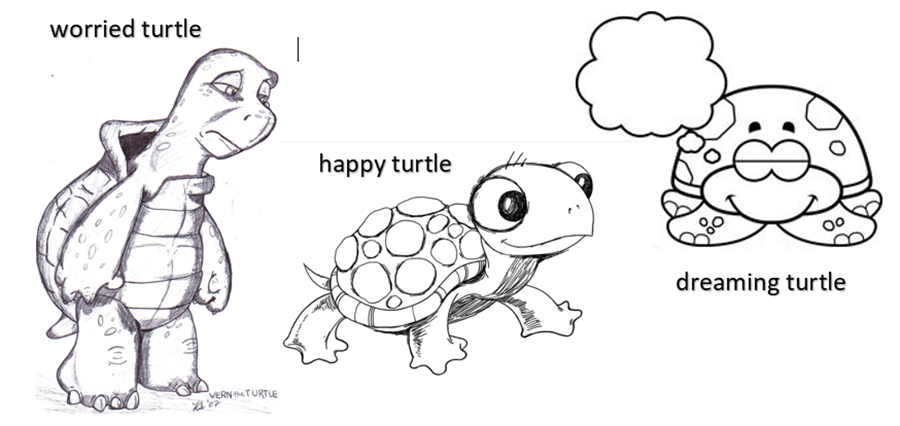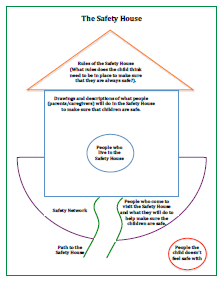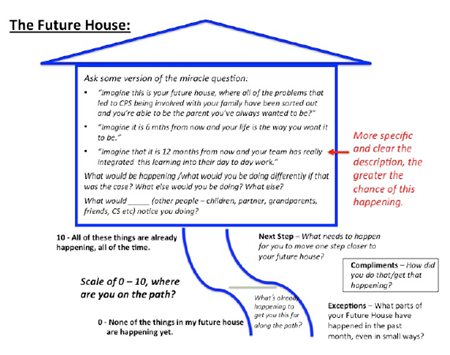Aboriginal and Torres Strait Islander cultures use storytelling and drawing, painting, song and dance communicate. To ensure our engagement with Aboriginal and Torres Strait Islander communities is culturally safe, consider using the following practice tools in ways that they can be easily understood by children and families.
The Immediate Story
The Immediate Story is a great tool to use when children are entering a care arrangement, to help reduce the impact of trauma and share information in a simple yet meaningful way so children understand as much as possible about what is happening to them.
The Immediate Story provides an explanation to the child about the reason for the care arrangement, about what is happening now or has just happened (for example, the child being removed from their parents’ care and going to stay with other family members or foster carers), and what is going to happen next.
This tool is also beneficial for the carer’s own children when new children are entering their family home at the start of a care arrangement, or perhaps when a sudden change of care arrangement occurs and the carer’s children experience a loss.
Consider using colour and drawings rather than words to tell the story, accompanied by verbal storytelling. Encourage family members to contribute to the drawings and storytelling as well, to increase the child’s understanding of the message and sense of safety when it is delivered by family.
The Three Houses Tool
The Three Houses Tool involves both drawing and words and is effective at helping children express in drawings their worries, what makes them happy and what they would like from their care arrangement. The children don’t have to use houses as a basis of this tool. They could use any symbol or drawing that will help them connect, such as a teddy bear, a fairy, a community drawing, boat, palm tree, their totem and so on.
Imagine a child having a totem of a turtle, and use the symbol of a turtle as a safe way to engage the child. You could have a worried turtle, a happy turtle and a dreaming turtle instead of a house of worries, good things and dreams.

This tool may also be beneficial in engaging with carer’s children to express their worries, what makes them happy and what they would like from their family and home life now they are children in care.
Solution-focused questions
Solution-focused questioning or interviewing is an approach for workers to efficiently and effectively facilitate a change process by using questions to promote a vision for change.
Below is a list of example solution-focused questions.
Exception questions uncover instances when the problem could have occurred but did not, and help obtain a balanced picture of the family, creating a vision that change is possible.
- You are saying that at times in your childhood you moved around, how were you able to maintain your connection to kin, culture and community? What would like to see happening for your child to give you a sense that they are being nurtured to keep connected to their kin, culture and community?
- You are saying that you have lots of cultural demands and expectations on you and at times they weigh you down. When was a time that you felt you were able to achieve all the expectations on you? What were you able to do to help you achieve everything?
- Tell me about a time when you were not confident about family contact happening? When was that? How were you able to identify what needed to happen so you felt confident? What kind of difference did that make for your child?
- Do you think people from the same cultural group have had to face similar experiences? What were the things you were able to learn from their situations that you could use to improve your situation?
Miracle questions are used to help children, young people and families create goals and vision what they will be doing differently in their desired future.
If you could imagine that it is six months in the future from now and the worries that brought Child Safety into your life have been resolved. What would it look like? What steps would you have to take to get there? What would notice about yourself? What would your family and friends notice was different about you? What would you notice was different in your home?
Scaling questions help create discussion and understanding of danger and safety. It is not the number that is important, but the conversation that follows the scaling process. Scaling questions can help to discuss the ‘next steps’ to change.
- On a scale of 0 to 10, with 0 meaning you have no confidence the carer will be able to help your child to have a connection to culture while your child is in their care or 10 meaning you feel confident the carer will maintain and nurture your child’s connection to culture, where on the scale do you feel things are at currently?
- What would be need to be happening for your child to feel you move up one step on the scale?
- On a scale of 0 to 10, how much would you say you are willing to provide help to?
- What would it take for you to increase, by just one point, your willingness to solve this problem?
- What’s the most important thing you have to do to keep things at a 7 or 8?
Relationship questions
- I notice you scaled 4 on a scale of 10, indicating you have some concerns the carer may not be able to meet the cultural needs of your child. If the carer was here now, what might you think they would scale themselves and what do you think they will need help with to ensure your child’s connection to culture is maintained and nurtured?
- If we think of your child, what do you think they might want help with to feel connected to culture and country?
Appreciative inquiry
Below are some example appreciative inquiry questions to assist in the conversation with Aboriginal and Torres Strait Islander peoples when discussing their culture.
Remember, appreciative inquiry has four domains to help you unpack the information you are looking for: discovery, dream, design and destiny.
Published on:
Last reviewed:
-
Date:
Maintenance
-
Date:
Maintenance.
-
Date:
Terminology change - placement to care arrangement
-
Date:
Page created




